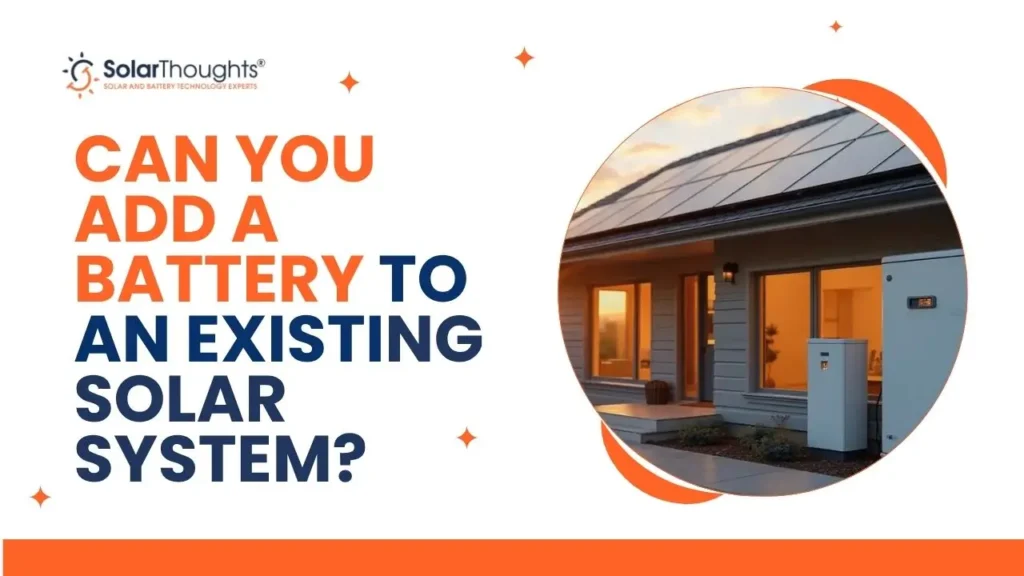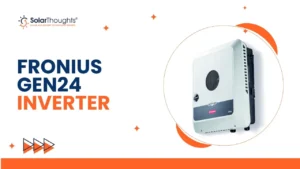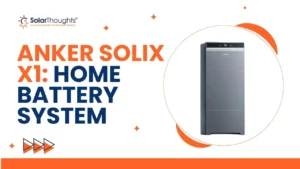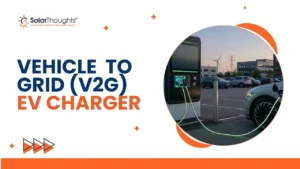Battery additions to existing solar systems are now more available than ever. Prices keep dropping, and technology continues to improve. Many homeowners ask us “can i add a battery to existing solar?” The answer is simple – yes, and it makes more sense now than ever before.
Table of Contents
ToggleSolar energy storage benefits have caught homeowners’ attention. Battery backup systems for existing solar installations provide many advantages. Solar batteries range from $4,500 to $18,000 and help achieve energy independence. They cut down energy bills and serve as a reliable backup power during outages. Solar panel systems typically last 25 years, while batteries work efficiently for 10-15 years. Two main approaches exist to add battery storage to current solar setups: AC-coupled and DC-coupled systems. Your choice impacts the existing setup, especially since most string inverters operate for about fifteen years.
This piece covers everything about adding batteries to your current solar system. You’ll learn about compatibility requirements and cost factors that help you make smart decisions about your renewable energy investment.
Why Add a Battery to Your Existing Solar System?
Adding a battery to your solar system makes sense, and with good reason too. Unlike solar panels that send extra energy to the grid, batteries store this surplus. This creates a smarter energy system right in your home.
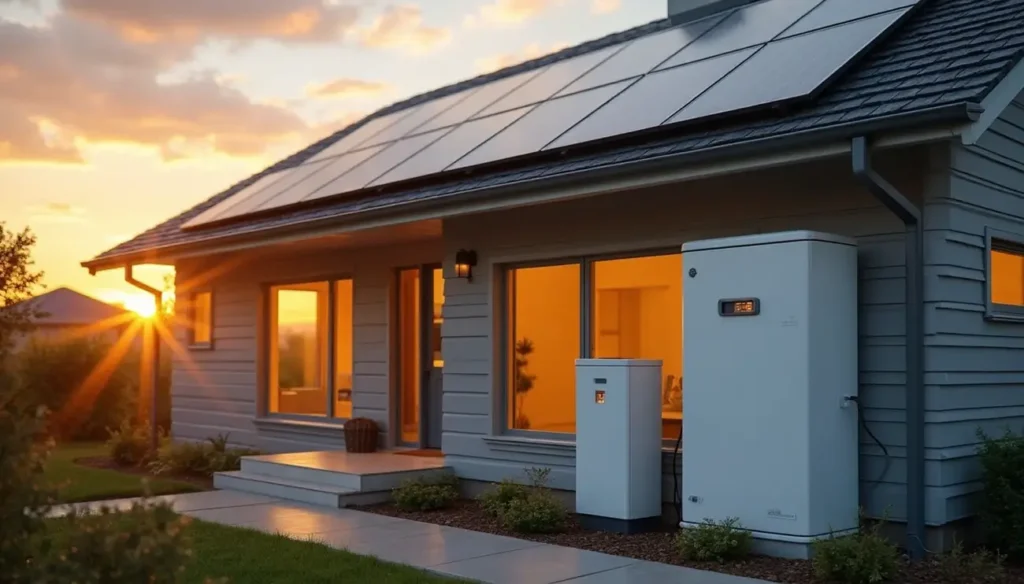
Reduce reliance on the grid
Solar-only systems send excess electricity to the grid when they make more than you use. Battery storage captures and saves this extra energy instead of sending it away. You can use your own power day and night, which means you’ll need nowhere near as much power from traditional sources. The right size solar-battery system could help you achieve 100% energy self-sufficiency.
Lower electricity bills
A battery can cut your electricity costs in several ways. You’ll buy less power from retailers since you’ll use more of your own solar energy. Battery owners can also:
- Save money with time-of-use tariffs by charging when rates are low and using stored power during expensive peak times
- Cut down on peak demand charges
- Earn extra money by joining virtual power plants (VPPs)
Research shows that solar panels paired with the right battery can reduce household energy bills by 75% to over 100%. This could save you between $2,021 and $3,443 each year.
Gain blackout protection
Backup power during outages is a big plus. Regular grid-connected solar systems shut down during blackouts to stay safe (anti-islanding). But batteries with blackout protection keep your essential appliances running.
Types of Blackout Protection:
| Type | Coverage | Duration |
|---|---|---|
| Whole-home backup | Powers everything but drains faster | Shorter runtime |
| Essential circuits | Power critical items (fridge, lights) | Extended runtime |
Increase energy independence
Battery systems are a great way to get more control over your power supply. They help protect you from grid problems, price hikes, and power cuts. The Australian government’s $3.52 billion Cheaper Home Batteries Program now offers about 30% off battery installations, making energy independence more available.
Storing extra solar energy helps you get the most from your renewable resources. This also helps create a more stable electrical grid for everyone.
How Solar Batteries Work with Existing Systems
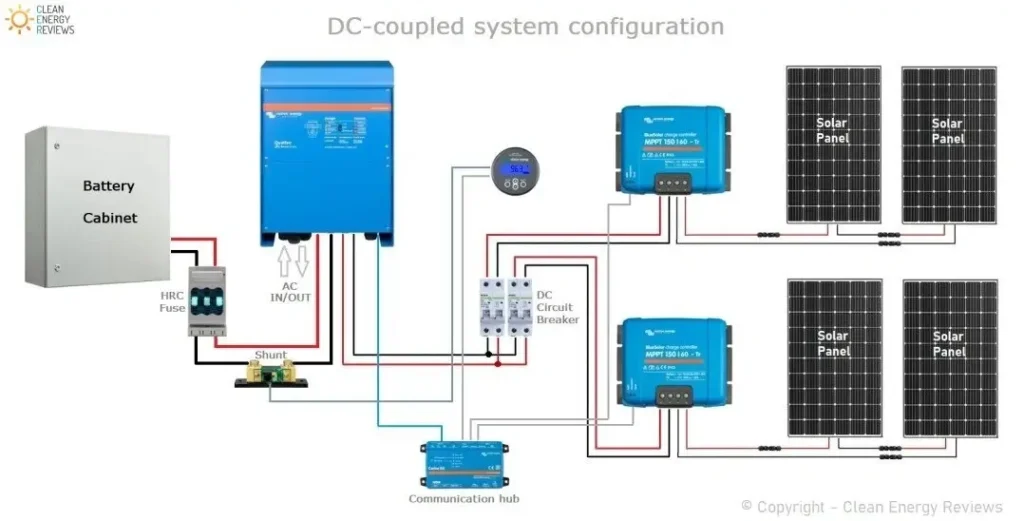
Solar batteries reshape how your existing solar system works by turning excess energy from grid export into a stored resource for your home. You’ll make better decisions about upgrading your system when you understand the technology behind it.
Simple solar battery functionality
Solar batteries work as energy reservoirs that capture surplus electricity your panels generate instead of sending it to the grid. These batteries prevent valuable energy waste for homeowners with export limits when production goes beyond the allowed export threshold. Your stored energy becomes available when you need it most – during evening hours or cloudy periods when panels don’t produce enough power.
How energy is stored and used
The battery uses a chemical reaction to convert electricity into charged particles (ions) that stay stored until needed. Residential solar batteries commonly use lithium-ion technology because it offers high energy density. Some newer systems use lithium iron phosphate (LiFePO4) to last longer.
The charged system operates based on your needs:
- Normal operation: Your battery provides power when solar production drops below what you need
- Grid outage: Properly configured batteries can power your home while disconnected from the grid
| System Type | Energy Flow | Efficiency | Installation Complexity |
|---|---|---|---|
| AC-Coupled | Solar→Inverter→AC→Battery Inverter→Battery | Lower (more conversions) | Easier with existing systems |
| DC-Coupled | Solar→Battery→Inverter→Home | Higher (fewer conversions) | More complex modernizing |
What changes when a battery is added
Your system needs modifications when you add storage to existing solar. Your current inverter might need an upgrade to a “hybrid” model that works with batteries. You can also add a second inverter just for the battery through AC coupling, which makes modernizing existing systems easier.
Homes using microinverters (small inverters under each panel) need a battery with its own dedicated inverter. The energy flow changes – your battery charges first from excess solar before sending power to the grid. This lets you use stored energy before importing electricity.
A system that can “island” keeps powering your home during outages by disconnecting from the grid while solar charging continues. This setup costs more but gives you extended power security when outages last longer.
Options for adding battery backup to existing solar

Learning about adding battery storage to existing solar requires choosing between AC-coupled and DC-coupled systems. Your current setup and future needs will determine which approach works best.
AC-coupled systems: pros and cons
AC-coupled battery systems connect to your home’s AC mains and create a “two box” solution with separate inverters for solar panels and battery storage. This setup works great to modernize batteries to existing solar installations without replacing your current equipment.
Advantages:
- Simple modernization for existing systems
- Compatible with almost any solar array or inverter type
- Solar panels keep generating electricity even if battery inverter fails
- Batteries charge from both solar panels and grid
Disadvantages:
- Efficiency drops to 90-94% due to triple conversion of electricity (DC→AC→DC→AC)
- Additional components make it costlier
- Installation needs more labor
DC-coupled systems: pros and cons
DC-coupled systems connect solar panels and batteries directly through a shared hybrid inverter that works as a “one box” solution. Panels charge batteries without extra power conversions in this setup.
Advantages:
- Better efficiency (up to 98%) with fewer energy conversions
- New installations cost less
- Panels generate more electricity than the inverter rating through “oversizing”
Disadvantages:
- Both solar and battery stop working if hybrid inverter fails
- Component placement lacks flexibility
- Modernization becomes more complex
Replacing vs keeping your current inverter
| Consideration | Keep Current Inverter | Replace with Hybrid Inverter |
|---|---|---|
| Installation Complexity | Simpler (add AC-coupled battery) | More complex rewiring |
| Cost | Higher battery cost, lower installation cost | Higher upfront cost, potentially lower long-term cost |
| Efficiency | Lower (90-94%) | Higher (up to 98%) |
| Expandability | Easier to add different battery brands | Usually limited to compatible batteries |
Your inverter’s age and compatibility play a crucial role in this decision. Replacing with a hybrid model makes financial sense if your existing inverter approaches its 10-15 year lifespan. AC-coupled solutions let you keep your current setup while adding storage capability.
Tesla Powerwall or Enphase IQ Battery series provide the quickest way forward for systems with microinverters or string inverters not designed for batteries.
Want to enhance your solar system with battery storage? Whether you’re in Brisbane, Gold Coast, or Sunshine Coast, connect with SolarThoughts for quality battery installation services and complete energy storage solutions.
What to Consider Before Installation
You need to assess several critical factors before adding a battery to your existing solar system. A thorough evaluation upfront will help your battery upgrade deliver the best value and performance.
System compatibility and rewiring needs
Your current inverter setup determines compatibility for most existing solar installations. Solar systems installed after 2018 usually have hybrid inverters or can work with an AC-coupled battery. Older systems might need extra inverters or monitoring devices. The installation process usually needs:
- A pre-site inspection (especially when you have older systems)
- Some rewiring or inverter adjustments
- 1-2 days of installation time
Systems with microinverters (small inverters under each panel) need batteries that have built-in inverters through AC coupling. String inverter systems give you more flexibility with both AC and DC coupling options.
Battery size and usage patterns
We need to examine your household’s energy consumption patterns to select the right battery capacity. The first step is to understand if your solar system generates enough excess power to fill a battery. A typical Australian setup combines an 8kW solar system with a 10kWh battery, which creates a good balance between generation and storage.
| Usage Pattern | Recommended Battery Size | Best For |
|---|---|---|
| Double Peak | 8-10kWh | Families with school-age children |
| Evening Peak | 10-15kWh | Families without school-age children |
| High Day Use | 5-8kWh | Home offices/daytime users |
| Night Focus | 13-18kWh | Night shift workers |
Your battery should be used at least 80% to get the best financial returns.
Budget and long-term savings
Battery costs for residential solar systems range from AUD 1,528.99 to AUD 1,834.79 per kWh of capacity. Complete installation costs:
- 3kWh system: ~AUD 6,330-7,568
- 8kWh system: ~AUD 13,822-15,656
- 13kWh system: ~AUD 20,870-23,057
The Cheaper Home Batteries Program offers nationwide discounts. State-specific rebates and interest-free loans can reduce your costs further.
Considering battery storage for your solar system on the Sunshine Coast? Reach out to SolarThoughts for expert battery storage installation and maximize your solar investment.
Monitoring and support services
Good monitoring prevents system failures from going unnoticed until your next electricity bill. Regular system checks and performance tracking help maintain peak efficiency. SolarThoughts can help if you’re looking for solar battery storage in Brisbane.
Quality batteries come with 10-year warranties, and proper maintenance can extend their life significantly. Many companies provide monitoring and maintenance plans that cover remote system checks, fault detection, and discounted service rates.
Conclusion
A battery addition to your existing solar system brings amazing benefits beyond just storing energy. We’ve seen how batteries can turn your solar investment into a detailed energy solution. Storing excess energy instead of sending it back to the grid boosts your self-sufficiency and keeps you protected during outages.
Your choice between AC-coupled and DC-coupled systems ended up depending on your setup, budget, and future plans. AC-coupled systems are easier to update for existing solar setups. DC-coupled solutions give you better efficiency but need more complex installation. Here’s a quick look at what to think about when making your choice:
| Decision Factor | Key Considerations |
|---|---|
| Current Inverter Age | Replace if nearing 10-15 year lifespan |
| Installation Complexity | AC-coupled: easier retrofit, DC-coupled: more complex but efficient |
| Budget | Original costs vs. long-term savings |
| Usage Patterns | Match battery size to your household consumption |
| Blackout Protection | Essential circuits vs. whole-home backup |
Money plays a big role here. A well-sized battery system could pay for itself with yearly savings between $2,021 and $3,443 while giving you energy security. On top of that, government incentives through programs like the Cheaper Home Batteries Program make these systems more available than before.
Battery storage needs careful planning, but energy independence, lower bills, and protection from blackouts make it a smart choice for many homeowners. Need solar battery storage in Brisbane? Just ask SolarThoughts today. Whatever option you pick, good system monitoring and maintenance will help your solar battery system perform its best during its 10-15 year lifespan.
Battery technology gets more affordable as electricity prices keep rising. Now’s the time to pick the right battery type for your solar system that serves your needs best. This piece gives you everything you need to take that next step toward complete energy independence.
Planning to add battery storage to your existing solar setup on the Gold Coast? Get in touch with SolarThoughts for reliable solar battery installation and personalized energy solutions.
Key Takeaways
Adding a battery to your existing solar system is not only possible but increasingly practical, offering significant benefits for energy independence and cost savings.
Yes, you can retrofit batteries to existing solar systems using either AC-coupled (easier installation) or DC-coupled (higher efficiency) configurations.
Battery storage can reduce electricity bills by 75-100%, saving $2,021-$3,443 annually by storing excess solar energy for later use.
Two main options exist: AC-coupled systems work with any existing setup but are less efficient, while DC-coupled systems require hybrid inverters but offer 98% efficiency.
Proper sizing is crucial – match battery capacity (typically 8-10kWh) to your household’s evening energy consumption patterns for optimal financial returns.
Government incentives make batteries more affordable through programs like the Cheaper Home Batteries Program offering 30% discounts nationwide.
The key to success lies in assessing your current system compatibility, energy usage patterns, and choosing the right battery size to maximize both savings and backup power capabilities during outages.
Ready to upgrade your solar system with battery storage? If you’re in Brisbane and looking for professional battery installation services, contact SolarThoughts today for expert consultation and installation.
FAQs
Q1. Is it worthwhile to add a battery to an existing solar panel system?
Adding a battery to your solar system can be beneficial, especially in areas with time-of-use electricity rates. It allows you to store excess energy during low-demand periods and use it during high-demand, more expensive times, potentially reducing your electricity costs by 75-100%.
Q2. How much does it typically cost to add battery storage to an existing solar setup?
The cost of adding a battery to an existing solar system varies, but generally ranges from AUD 6,330 to AUD 23,057, depending on the battery capacity. A common 8kWh system costs approximately AUD 13,822 to AUD 15,656. Government incentives and rebates can help reduce these costs.
Q3. Can batteries be added to any type of solar system?
In most cases, batteries can be added to existing solar systems. However, some rewiring may be necessary, and if your current inverter isn’t compatible, you might need to replace it. The ease of adding a battery depends on your system’s configuration and age.
Q4. What are the main options for integrating battery storage with existing solar panels?
There are two main options: AC-coupled and DC-coupled systems. AC-coupled systems are easier to retrofit but slightly less efficient, while DC-coupled systems offer higher efficiency but may require more complex installation. The choice depends on your current setup and specific needs.
Q5. What factors should I consider before installing a battery with my existing solar system?
Key considerations include your system’s compatibility, potential rewiring needs, appropriate battery size based on your energy usage patterns, budget and long-term savings potential, and the availability of monitoring and support services. It’s also important to assess whether you need backup power during outages.
Our Popular Services
Top-rated solar panels company in Brisbane | Solar Panel Installation in Gold Coast | Upgrading existing Solar system | Solar Panel Repairs and Maintenance | Solar Panel Cleaning Service | Solar Battery Installations | Solar Inverter Installations

